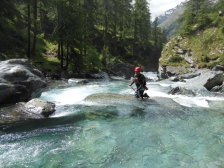
In the first two issues of this series of blogs where our Chairman William Mackay IFMGA looks at the Safe System of Training/ Operating in the Adventure Tourism sector we looked at “Safe Culture” and “Safe Place”. What we are trying to do is see how the evidence can be analyzed against an established safe system, which we have identified as The Safe System; A model that can be referred to when considering most accidents in this sector.
To recap: The Safe System of Training/ Operating is a safety management analysis protocol that consists of 5 separate elements where the hazards have been assessed and the consequent control measures have been integrated, at a high level, into formal procedures, in order to reduce the inherent risks to as low as is reasonably practicable (within the constraints imposed by the operational imperative). Today we continue and look at “Safe Practice” in this overall concept.
When looking at this element we must consider further that The Safe System of Training / operating can/ is used to evaluate the operation/ incident where the injury and/ or damage occurred and evaluate whether or not the operating culture/ organization have a:
Safe Practice. Practices are conducted in accordance with drills (sometimes rules), guidance (this is favoured by the HSE in many practices/ activities) and instructions laid down by the appropriate authorities/ National Governing Bodies NGBs). Safe practices include following correct procedures, the presence of adequate training and supervision/ instruction, the provision of warnings, and the use of Personal Protective Equipment (PPE) and special clothing (rock climbing shoes fall into this category). It is essential that all training be monitored to ensure that procedures are strictly adhered to. A risk – benefit assessment/ analysis should be undertaken in activities that have inherent risk of injury; taking into account the risks while recognising the benefits to the participants. Judgements about the balance between risk and benefits can be complicated, involve many factors and are often subjective in nature.
IEW experts who specialise in accident investigation have used the 5 elements of the Safe System as a tool to identify what happened, how it happened and why it happened and Safe Practice is paramount to the operation and is a key stone to the other elements we are going to explore in future blogs.
An article signed by our Chairman, William Duncan MacKay IFMGA, ISIA & FRGS.